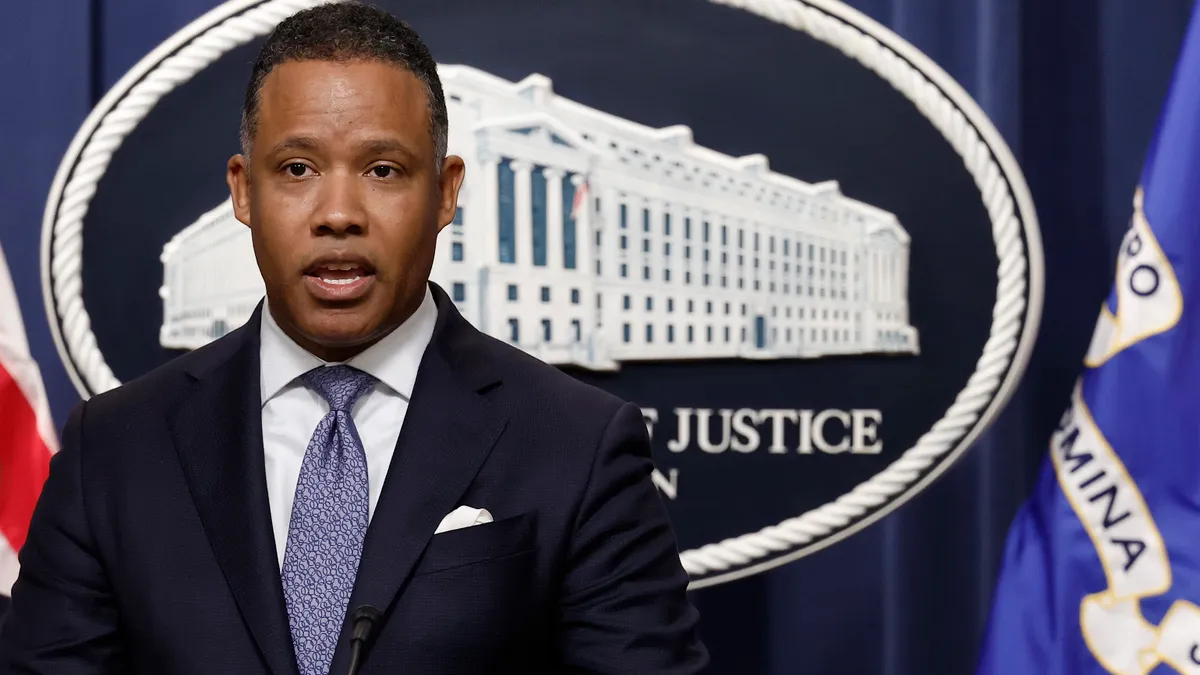Creating a disciplinary matrix is a good way to show you’re serious about tying executive compensation to compliance in a way the Department of Justice would like to see, Amy Schuh of Morgan Lewis says.
The agency has been signaling for some time that it wants companies to do a better job holding executives accountable for misconduct by reducing bonuses or equity awards if they don’t meet compliance metrics— and even clawing back pay when it’s warranted.
“Our goal is to ensure that the company uses compliance-related criteria to reward ethical behavior and punish and deter misconduct,” Assistant Attorney General Kenneth Polite has said.
The idea behind a disciplinary matrix isn’t new, but the agency has been shining a spotlight on it recently because it wants companies to be clear on the actions they’ll take when executives or managers violate their code of conduct or internal policies.

“For different types of allegations that may come into your company, are they low risk, medium risk, or high risk, and [based on their different levels of] severity, do you have a range of discipline that might apply?” said Schuh, a partner at Morgan Lewis.
Conflicts of interest, bribery, sexual harassment, failing to protect trade secrets—these are types of misconduct that could warrant disciplinary action. But the nature of that disciplinary action would differ based on the risk and severity of the violation.
For low-risk, low-severity violations, disciplinary action might mean verbal coaching or mandatory training while high-risk, high-severity violations would typically mean termination.
Violations that fall between those two extremes would likely be the ones subject to a financial penalty, like a withheld bonus, reduced incentive pay or clawback.
“Is there something the company is using to let people feel the pain of that punishment?” said Schuh. “A lot of people just care about money. So, how are you going to incentivize them to behave well?”
How you flesh out compliance-related stipulations can be complicated by the state or country in which the executive is based and other factors, but in-house counsel can lay the groundwork by adding language to the employment contract or other documents executives and managers sign.
Clawbacks are legally trickier than reducing incentive pay, but DOJ recognizes that and is mainly looking for companies to make a good-faith effort to use them.
“They’re looking at policies and processes [to show] you’re making a good faith attempt to recoup money from your executives,” Schuh said.
Publicly traded companies are already putting in place clawback policies to comply with a Securities and Exchange Commission requirement that takes effect next year making them mandatory when the company restates its financials.
“It applies whether it’s a capital-R material restatement or a little-r non-material restatement of your financials,” she said.
But there’s virtually no overlap between what the SEC is looking for and what DOJ wants, Schuh said.
“The SEC language is much more narrow,” she said. “And it’s compulsory.”
“On the DOJ side,” she added, “the misconduct they’re talking about in the first instance, I would say, is criminal, and criminal misconduct doesn’t necessarily have an implication on the financials.”
And it has an intent requirement, she said.
“We’ve seen in the news companies criticized, maybe fairly or unfairly, around paying off executives involved in a MeToo-like issue,” she said. “So, the DOJ is focused on a much broader category of wrongdoing.”
If your company doesn’t have a clawback policy in place and you’re subject to the SEC rule, you’ll need to write separate policies for both types of clawbacks if you want to comply with DOJ’s priorities.
“Law firms are counseling clients on what that new SEC policy needs to look like and at same time are counseling around how a broader clawback provision that is embedded in some type of documents would trigger recoupment,” she said. That type of recoupment “is probably less likely in an employment agreement or severance agreement than some kind of incentive document that executives and employees are signing as part of a long-term incentive plan.”
“Most companies,” Schuh said, “if they haven’t started to look at this, should be working with firms on both clawback provisions.”













